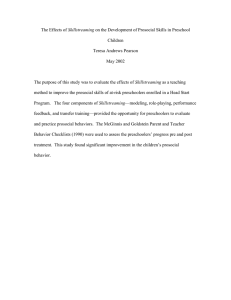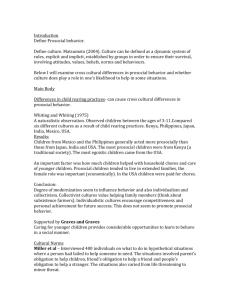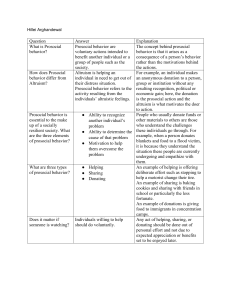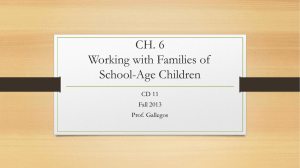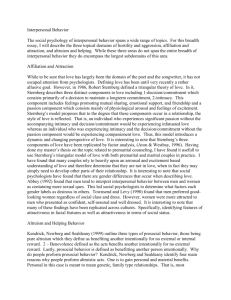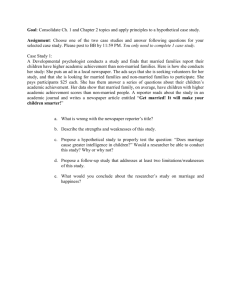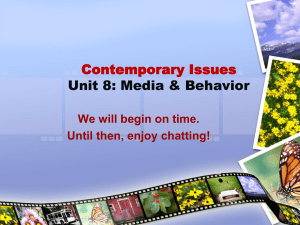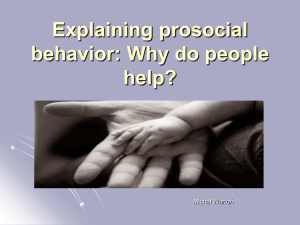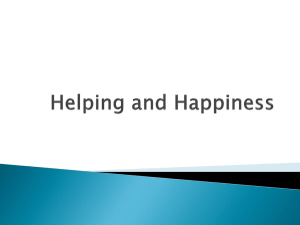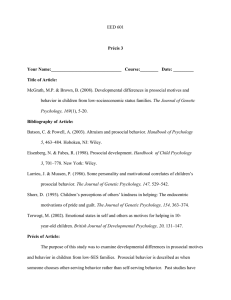Promoting Prosocial Behavior
advertisement
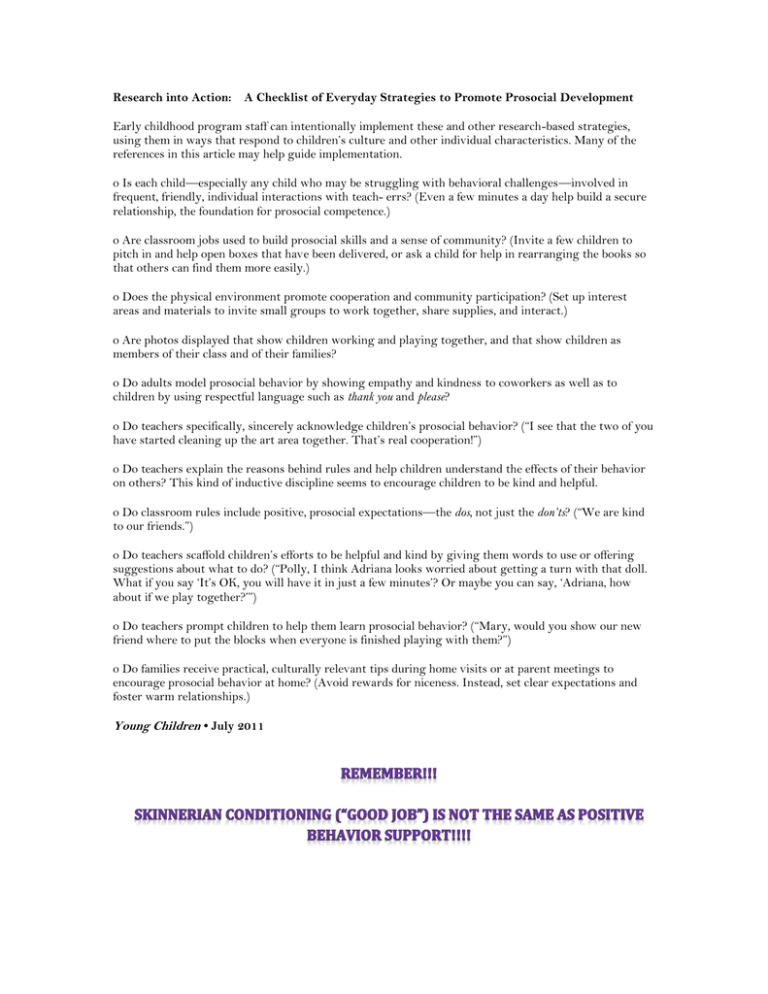
Research into Action: A Checklist of Everyday Strategies to Promote Prosocial Development Early childhood program staff can intentionally implement these and other research-based strategies, using them in ways that respond to children’s culture and other individual characteristics. Many of the references in this article may help guide implementation. o Is each child—especially any child who may be struggling with behavioral challenges—involved in frequent, friendly, individual interactions with teach- errs? (Even a few minutes a day help build a secure relationship, the foundation for prosocial competence.) o Are classroom jobs used to build prosocial skills and a sense of community? (Invite a few children to pitch in and help open boxes that have been delivered, or ask a child for help in rearranging the books so that others can find them more easily.) o Does the physical environment promote cooperation and community participation? (Set up interest areas and materials to invite small groups to work together, share supplies, and interact.) o Are photos displayed that show children working and playing together, and that show children as members of their class and of their families? o Do adults model prosocial behavior by showing empathy and kindness to coworkers as well as to children by using respectful language such as thank you and please? o Do teachers specifically, sincerely acknowledge children’s prosocial behavior? (“I see that the two of you have started cleaning up the art area together. That’s real cooperation!”) o Do teachers explain the reasons behind rules and help children understand the effects of their behavior on others? This kind of inductive discipline seems to encourage children to be kind and helpful. o Do classroom rules include positive, prosocial expectations—the dos, not just the don’ts? (“We are kind to our friends.”) o Do teachers scaffold children’s efforts to be helpful and kind by giving them words to use or offering suggestions about what to do? (“Polly, I think Adriana looks worried about getting a turn with that doll. What if you say ‘It’s OK, you will have it in just a few minutes’? Or maybe you can say, ‘Adriana, how about if we play together?’”) o Do teachers prompt children to help them learn prosocial behavior? (“Mary, would you show our new friend where to put the blocks when everyone is finished playing with them?”) o Do families receive practical, culturally relevant tips during home visits or at parent meetings to encourage prosocial behavior at home? (Avoid rewards for niceness. Instead, set clear expectations and foster warm relationships.) Young Children • July 2011
